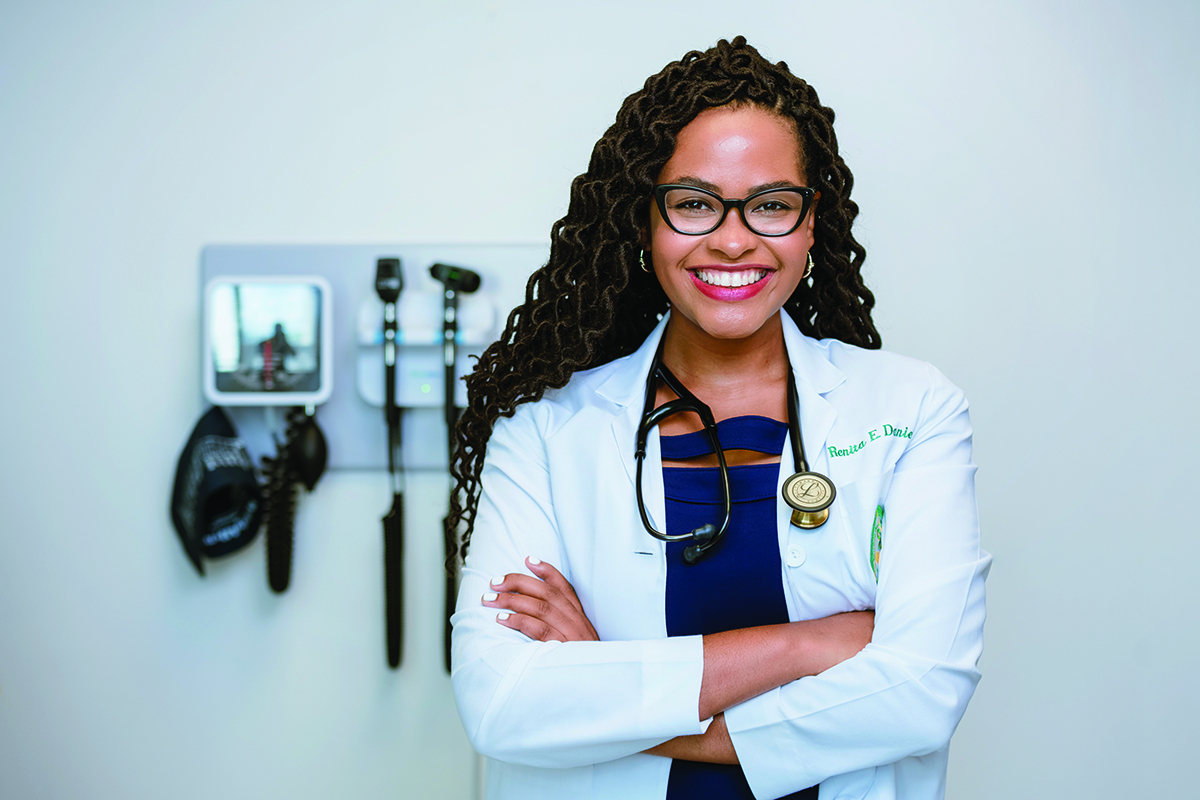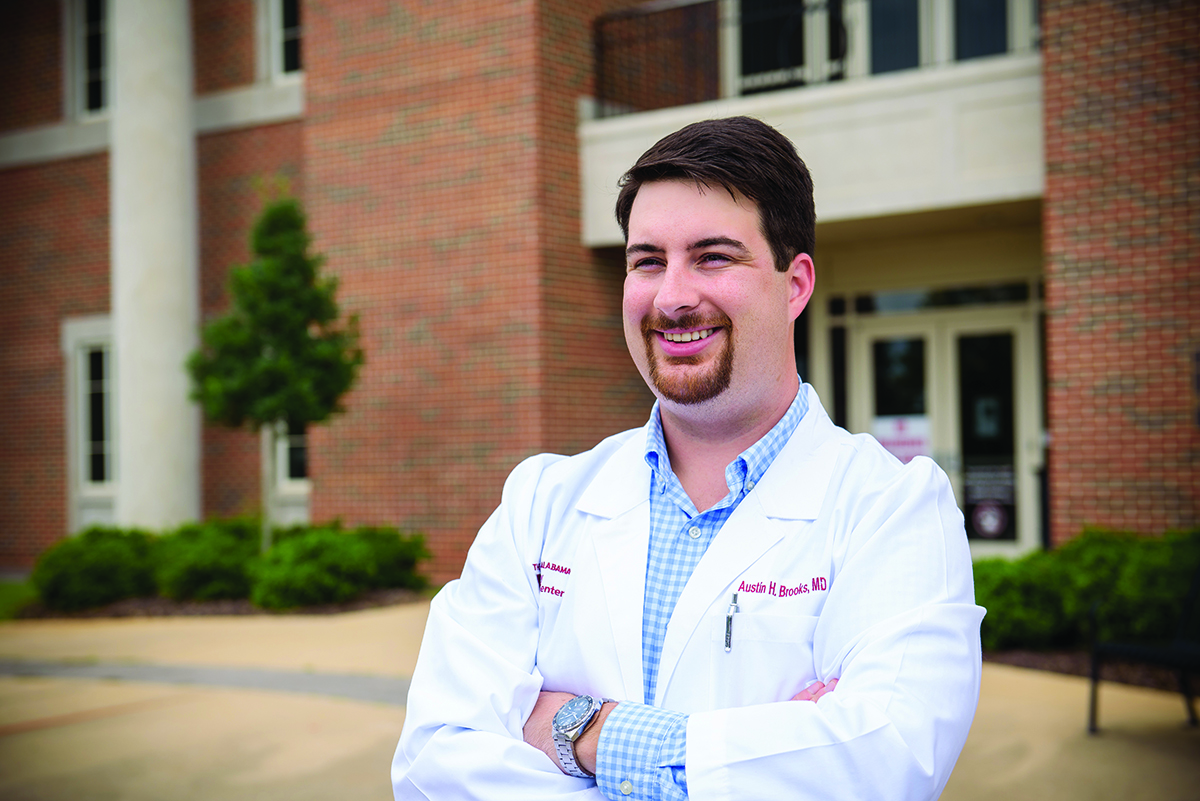For decades, reports have warned of the looming shortage of primary care physicians in the United States. The problem is especially acute in rural areas, like much of Alabama—according to the U.S. Department of Health and Human Services, 62 of the Alabama’s 67 counties do not have enough primary care physicians to meet the needs of its population.
The Heersink School of Medicine’s Primary Care Track (PCT) aims to increase the number of medical students who pursue careers in primary care. Moreover, it is hoped that some of these graduates will practice in under-resourced, rural communities. Last May, the first cohort of Primary Care Track students graduated, 65% of which entered potential primary care residencies.
A four-year M.D. program for students interested in primary care careers, the PCT is based at the Heersink School of Medicine’s Tuscaloosa Regional Campus at the University of Alabama’s College of Community Health Sciences (CCHS). The track provides students with a strong foundation in clinical medicine through longitudinal experiences with patients, lasting relationships with physician mentors, and special leadership-building programming.
“CCHS and other regional campuses support the school by extending the clinical training capacity and providing a training environment that emphasizes primary and community-based care,” says Grier Stewart, M.D., assistant dean for Undergraduate Medical Education and associate professor of Family, Internal, and Rural Medicine at the CCHS. “The Primary Care Track continues to train physicians to return to rural Alabama.”
 Renita Daniels, M.D.
Renita Daniels, M.D.
“This track differs from traditional training in the sense that students get exposure to more outpatient care and follow their procedures in continuity,” Renita Daniels, M.D., part of the first cohort of PCT graduates, says. “For example, I got to examine a pregnant woman in Family Medicine and six weeks later, her baby in Pediatrics. Similarly, another classmate examined a patient in Family Medicine and followed them through their process in Surgery.” Daniels began the UAB Medicine-Pediatrics Residency Program last summer.
 “As a person interested in general medicine and primary care, rotating through different specialties every day was truly the highlight of the program.” —Austin Brooks
“As a person interested in general medicine and primary care, rotating through different specialties every day was truly the highlight of the program.” —Austin Brooks
PCT students complete the requisite basic sciences curriculum during their first two years of medical school on the main campus in Birmingham. They then spend their third year in a Longitudinal Integrated Clerkship (LIC) on the Tuscaloosa campus. In the LIC clinical education model, students work alongside faculty for a majority of the year to follow and care for patients longitudinally, learning simultaneously across the core disciplines of medicine and in a variety of settings, including outpatient clinics, hospitals, nursing homes, and patients’ home.
“As part of the LIC program, you get to do something different every day,” Austin Brooks, M.D., who graduated in May 2022 from the Rural Medical Scholars Program, which is also based at the Tuscaloosa Regional Campus and offers the same coursework as the Primary Care Track. “As a person interested in general medicine and primary care, rotating through different specialties every day was truly the highlight of the program.” Brooks joined the University of Alabama Family Medicine Residency Program last summer.
During the fourth year, PCT students complete three required four-week rotations: In-patient Acting Internship, Acute Care Acting Internship, and Community Medicine Acting Internship. PCT students also complete 18 weeks of electives, in addition to a two-week residency preparation course. Brooks completed all of his rotations at the Tuscaloosa campus. “The continuity of physician-patient relationship was the big thing for me,” he says. “For example, being a part of delivering a baby and following them through postpartum checkups was very special.”
Another key attraction of the PCT is the mentoring offered. “Generally, students are drawn into the fields of mentors that serve as role models for them,” says Stewart. “One of the purposes of the PCT is to keep students exposed to physicians and mentors who work in primary care and community-based medicine. The hybrid LIC accomplishes this goal. By working one-on-one with their preceptors in the ambulatory environment, students have the opportunity to see what it’s really like in primary care.”
Brooks says he considers primary care the “cornerstone” of any health care system. “Primary care is like the quarterback in football—a person who should coordinate people’s care. The key is to be proactive and preventive, instead of reactive.”
According to Daniels, primary care is about the ability to see every point of care in a patient’s journey. “Everything branches through primary care; patients must see their primary care physicians when any symptoms appear. We are ones to treat them firsthand and send them to specialists if needed. Therefore, primary care is the starting point—the focal point of medicine.”
Currently, the CCHS is working on expanding its presence into the medical students’ preclinical years. “Our preclinical curriculum is being piloted and will expand to all PCT students with the class of 2026,” Stewart says. “We will teach and connect to students through online learning modules and discussion groups and bring them to Tuscaloosa for periodic clinics with a primary care mentor. We are also building a summer ‘camp’ for these students before the second year that will get them involved in the Tuscaloosa and West Alabama community and build on the education they are already receiving.” – Tehreem Khan